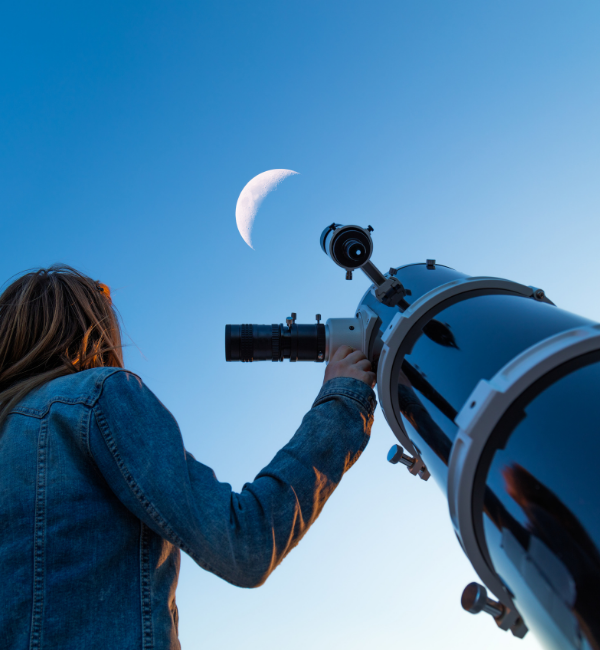Star Maze and Star Finder


Learn how space junk can impact safe space travel. They also create a star finder to help them explore the night sky.
What You Need
Activity 1: Space Maze
- 1 white paper plate
- 2 straws
- 2 pipe cleaners
- 1 piece of card stock
- 1 marble
- A few rocks (meteoroids)
- Scissors
- Tape
- Glue
- Pencil
Activity 2: Star Finder
- Scissors
- Star Finder and Frame (print out from National Research Council Canada)
Guide:
Safety Notes
Ensure you are familiar with Let's Talk Science's precautions with respect to safe virtual outreach to youth.
What To Do
Activity 1: Space Maze
Your mission is to get a spacecraft (a marble) from one side of the plate to the other side without hitting any space objects.
To create a maze:
- Add some obstacles to the plate by taping rocks (meteoroids) and other small items (space junk) to the plate (or draw some objects with a pencil).
- Using scissors, carefully cut straws and/or pipe cleaners to create pathways for your marble (rocket) to get from one side of the plate to the other without touching any space junk. Use tape or glue to attach them to your maze.
- Use a pencil to write 'start' and 'end' on opposite sides of the plate.
- Did you make enough pathways so your rocket (marble) does not hit any space junk?
- If your maze is too easy, add some more space junk or rocks to make it more difficult and add some new pathways to your maze.
Activity 2: Star Finder
- Cut out the 'night sky' (circle with the constellations that are visible from Canada).
- Cut out the frame (follow the likes) and cut out the middle oval part.
- Fold along the dotted lines of the frame (see photo in guide).
- Adjust and turn the 'night sky' in the frame so that today's date lines up with the time you want to look at the night sky. Follow the instructions on the tab of the star finder.
The constellations you see within the frame are the starts that you can see tonight!
Discovery
Space Objects and Flight
According to the Canadian Space Agency there are approximately 23,000 objects in space larger than a softball and many smaller objects! The objects are travelling very fast and even a smaller object hitting a spacecraft can cause damage. Scientists and engineers are trying to find ways to clean up some of the space junk to help protect orbiters like the International Space Station and other spacecrafts.
Star Finder
It takes the Earth 365 days to make a full rotation around the Sun. Depending on where the Earth is located during its rotation around the Sun, you will see stars and constellations in different places in the night sky! This star finder allows you to locate the starts during different times of the year.
Exploring space helps us learn more about our planet, other planets and can also help us understand some diseases. Many experiments are done on the International Space Station (ISS) that provide us with important information. To get to space, astronauts (such as David St. Jacques and Chris Hatfield) need to ensure they don't hit objects in space (meteoroids, space junk).
What's Happening?
Space Objects and Flight
According to the Canadian Space Agency there are approximately 23,000 objects in space larger than a softball and many smaller objects! The objects are travelling very fast and even a smaller object hitting a spacecraft can cause damage. Scientists and engineers are trying to find ways to clean up some of the space junk to help protect orbiters like the International Space Station and other spacecrafts.
Star Finder
It takes the Earth 365 days to make a full rotation around the Sun. Depending on where the Earth is located during its rotation around the Sun, you will see stars and constellations in different places in the night sky! This star finder allows you to locate the starts during different times of the year.
Why does it matter?
Exploring space helps us learn more about our planet, other planets and can also help us understand some diseases. Many experiments are done on the International Space Station (ISS) that provide us with important information. To get to space, astronauts (such as David St. Jacques and Chris Hatfield) need to ensure they don't hit objects in space (meteoroids, space junk).
Resources
Guide:
Additional:
- Star Finder and Frame (print out from National Research Council Canada)